by Susan Dean | Feb 3, 2018 | Plants

Some authorities show the Southeast Asia (Peninsular region) as their place of origin, others place its origin in northeastern South America. The coconut has spread throughout the tropics, particularly along tropical coastlines. Because the coconut is very dense and floats, it can be transported by sea currents enormous distances. The coconut palm thrives in sandy and saline soils in areas with abundant sunlight and regular rains. The coconut was originally brought to the islands of Hawaii long ago by Polynesian travelers from the South Pacific.
The meat of the coconut is good for the stomach and the intestines due to the amount of fiber.
A coconut tree will live approximately 60 years and generates an average bunch of about 15 coconuts each month. The coconut trees reach an average of 10-30 meters in height, depending on the variety. In Brazil, the use of coconut milk in food is a cultural heritage left by the slaves who came from Mozambique. In Timor, the coconut water is a liquid sacred used to bless the crops of corn. In World War II the coconut water was injected as an IV in soldiers who had severe dehydration. It has a composition similar to that of plasma. To the people of the islands of the South Pacific, the coconut palm tree is known as the tree of life. The coconut water contains low-calories: 8 oz has 45 ca lories. The meat or flesh of the fruit has the high caloric content. 1 ounce of coconut equals approximately 100 calories.
In India, where the fermented coconut water is used as a protein supplement in school meals, increases were observed in school performance and stature of children.
Coconut water is considered a natural isotonic rich in minerals. The presence of electrolytes such as sodium and potassium provide a more rapid absorption, recovering the losses of these minerals in the urine and skin. Coconut water is the only commercially available natural isotonic beverage. It is ideal to replace the fluid lost in physical activities and for recovery in cases of dehydration. Coconut water is indicated in cases of diarrhea or vomiting.
Another benefit of coconut water is in the fight against cholesterol problems, high blood pressure, cramps, and muscle pain, since the water tends to decrease the heart rate and control the amount of sodium and fluid throughout the body.
The coconut oil or coconut butter grease contains about 90% of saturated acids extracted by pressing the pulp. It is used often in the cosmetics.
Extra virgin coconut oil is a 100% natural product of plant origin. It solidifies below 25°C, is cold pressed, and is not subjected to the process of refining and deodorization, but extracted from the flesh of fresh coconut by crushing, pressing and triple filtration. The coconut oil is a food supplement with many beneficial properties providing strength for the immune system, facilitating digestion and absorption of nutrients. Substances found in coconut oil include the essential fatty acids and glycerol, allowing the body to produce saturated and unsaturated fatty acids according to the needs.
The content of saturated fat in coconut oil is similar to human milk, which means it is easy to digest, generating energy quickly, with beneficial effect on the immune system. When subjected to high temperatures, the extra virgin coconut oil does not lose its nutritional characteristics and is regarded as a stable oil. It is considered the most healthy to cook with and shows no trans fat generated by the process of hydrogenation, which is present in vegetable oils such as soybean, canola, corn and even of the olive. It helps keep the weight, decreases the cholesterol and protects against cardiovascular disease. Only extra virgin olive oil is healthy for the lower level of cholesterol.
The nutritional value of the coconut and its taste will vary depending on the stage of maturity the coconut is in. Generally, the coconut has significant amounts of minerals (potassium, sodium, phosphorus and chlorine), and fibers. As the flesh matures it becomes enriched and so does its content of fat. The coconut also has carbohydrates, proteins, fats, vitamins A, B1, B2, B5 and C and magnesium. As the water becomes the meat the protein content increases.
Composition of coconut water %
Water 95.5
Nitrogen 0.05
Phosphoric acid 0.56
Potassium 0.25
Calcium oxide 0.69
Magnesium oxide 0.59
Iron 0.5
Total solids 4.71
Reducing sugars 0.80
Total sugars 2.08
The coconut and calories:
20 g of coconut pulp and green = 35 calories
1 tablespoon (10g) desiccated coconut lime = 45
1 tablespoon (20 ml) coconut milk = 50 cal
1 cup (250 ml) of coconut water =55 cal
1 tablespoon (15 g) of fresh coconut lime = 70
2 tablespoon (25 grams) of grated flesh of mature coconut = 75 calories
1 tablespoon (10 grams) of coconut oil = 90 cal
1 small cube of sweet coconut dessert cooked in sugar (50 g)= 160 cal
Nutrition Facts
Coconut/Amount Per 1 medium (397 g)
Calories 1405
% Daily Value*
Total Fat 133 g 204%
Saturated fat 118 g 590%
Polyunsaturated fat 1.5 g
Monounsaturated fat 6 g
Cholesterol 0 mg 0%
Sodium 79 mg 3%
Potassium 1,413 mg 40%
Total Carbohydrate 60 g 20%
Dietary fiber 36 g 144%
Sugar 25 g
Protein 13 g 26%
Vitamin A 0% Vitamin C 21%
Calcium 5% Iron 53%
Vitamin D 0% Vitamin B-6 10%
Vitamin B-12 0% Magnesium 31%



by Susan Dean | Feb 3, 2018 | Herbs, Plants
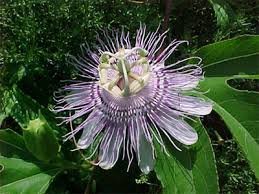
Passionflower
(Passiflora incarnata) is a perennial, climbing vine native to Southern and Central America and is cultivated in Europe. It reaches a height of 10-12 metres and climbs using thin tendrils to spiral around the host plant. The leaves are palmate, 3-lobed and alternate. The 5-petaled flowers have 5 sepals that make it look like the flower has 10 petals; they are pale blueish-white in color with a purple ‘fringe-like’ layer of fine petals on top. The flower has 5 pale colored stamens and 3 stigmas.
There are thought to be over 600 different forms of passiflora, commonly known as Passionflower, Maypops and also Maracuja in the Amazon. It was discovered in Peru in 1569 by the Spanish Doctor, Nicolás Monardes (c1493 – 1588). In 1608 Jesuit priests officially presented this herb from the New World to Pope Paul V by offering him dried samples of the plants and botanical illustrations. In the 17th century Giacomo Bosio a member of the Knights Hospitaller, referred to the passionflower as ‘La Flor de las cinco Llagas’, which translated as ‘the flower with 5 wounds’, a name that referenced the teachings of the Holy Catholic Church. The herb was used as a means to convert the Inca tribes to Christianity.
The passion flower tells the story of the Passion of Christ, it’s said that the 3 stamens represent the wounds of Christ, the sepals represent the apostles, and the corona (the frills around the stamens) are said to represent the crown of thorns.
The herb was discovered in the 16th century and it has taken over 100 years for the herbal wisdom of the passionflower to makes its way to the western world. In 1625 Tobia Aldinus, physician to Cardinal Farnese of Rome wrote in his book Hortus Farnesianus “This is the famous plant sung by poets and celebrated by orators. The plant reasoned about by philosophers, with the utmost subtlety, praised by physicians for its marvellous value. Sought for eagerly by the sick, wondered at by theologians, and venerated by all pious Christians”.
Some 8 years later, passionflower was added to the 1633 re-issue of John Gerard’s Herbal. Gerard died in 1612 and the publishers of the original version, Joyce and Bonham Norton, commissioned the botanist and apothecary Thomas Johnson (1600–1644) to revise and add to Gerard’s herbal. He did by all accounts most admirably, adding herbs from the new world to the book including the passionflower of which he wrote. Spanish Friers for some imaginary resemblances in the flower, first called it The Passion flower,” and made it as it were an Epitome of our Saviors passion.
The Passionflower is native to America and its medicinal uses were first discovered and used by the Native American’s. Passionflower is included in a Materia Medica written in Latin by the German botanist and physician Johann David Schoepf (1752-1800) and published in 1787. In one of the first reference books detailing the medicinal plants of the America’s, Schoepf mentioned the fact that the Native American’s used Passionflower to help in cases of epilepsy in the elderly. It became popular with the Victorians not as a medicine, but as an exotic bloom. In folklore the plant has been associated with calm and peace.
Passionflowers anti-spasmodic and sedative properties were documented, the authors wrote that “Its force is exerted chiefly upon the nervous system, the remedy finding a wide application in spasmodic disorders and as a rest-producing agent. It proves especially useful in the insomnia of infants and old people. It gives sleep to those who are laboring under the effects of mental worry or from mental overwork.”
Medicinal history: Used in the treatment of whooping cough, morphine habit, delirium tremens, convulsions in children and neuralgia, neuroses of children, teething and spasms, in the treatment of tetanus, hysteria, puerperal convulsions (involuntary spasms that occur in women just before, during, or just after childbirth), painful diarrhea, and acute mania.
Passionflower is widely used in sleep formulations, particularly when combined with valerian and/or hops.
Modern day herbalists utilize the aerial parts of the passion flower (flowers, leaves, and stems) for treating a variety of conditions, including insomnia and for pain relief, the variety commonly used medicinally is the Passiflora incarnate as it is the most medicinally beneficial variety. The herb is used to treat nervous tension, irritability, irritable bowel syndrome and premenstrual tension. An infusion of the plant is useful for treating back pain, due to its anti-spasmodic action. Passiflora contains a variety of alkaloids and flavonoids that are effective and non-addictive sedatives that do not cause drowsiness.
The herb contains a selection of indole alkaloids including harmine which as well as antidepressant properties, has insecticidal properties, and passiflorine, a substance which has been likened to morphine. Passionflower has a rich flavonoid content including luteolin an antioxidant studied for its potential immune system effects, and quercetin an effective bronchodilator, which can help reduce the release of histamine and other allergic or inflammatory chemicals in the body.
Cyanogenic glycosides are present along with the coumarins scopoletin and umbelliferone used as a sunscreen agent, and an optical brightener in the textile industry. Plant acids such as palmitic, oleic and myristic are present. Myristic acid is added to topical preparations for the skin as it aids absorbtion into the skin.
Passionflower leaves were used by tribes in the Amazon in poultices to heal cuts and bruises. The Cherokee used the herb in similar ways, and brewed the leaves and tendrils into a tea. The dried leaf and flowers can be combined with other herbs such as hops, chamomile and lavender to make a fragrant and soothing herbal sleep pillow. The dried leaf can be made into a bath tea with other soothing herbs such as lavender and rose petals to make a wonderfully fragrant and relaxing bath blend.
Passion Flower Tincture – Add Passion flower tincture to lotions, soaps, creams and bath products for the skin where astringency is required. No other non-medicinal uses are known for the tincture of this herb.
Do not take passionflower if you are pregnant or breastfeeding. Passion Flower should not be given to children under the age of 2.
It is used as a tea to counteract nervousness. It is a very useful herb for helping treat conditions such as neuralgia and insomnia. Passionflower has analgesic, anodyne, anti-depressant, anti-spasmodic, astringent, diaphoretic, hypnotic, narcotic, sedative and vasodilator properties. Passionflower is a wondrous relaxant and is particularly useful for those who are anxious. It has a quieting effect on the nervous system and in insomnia it produces normal sleep with no disturbance of the cerebral function. Passion Flower is a useful sedative and anti-spasmodic and is prescribed for convulsions, epilepsy, asthma, delirium tremens, and spasms of all kinds. It quiets the nervous system and leaves no harmful effects. It never stupefies the senses, and induces sleep except in cases when insomnia is due to pain”. Pictures below show the maypops and the fritillaria caterpiller who especially likes to eat the leaves. everywhere.
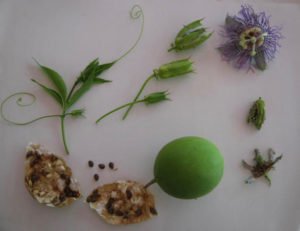
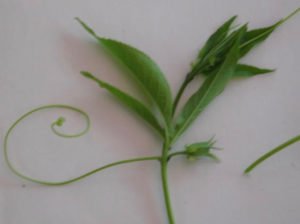


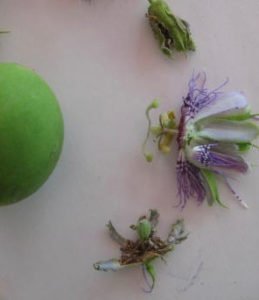


Fritillaria caterpillar and butterfly.
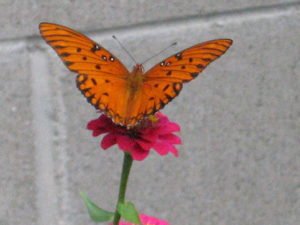

 Mustard seeds have an incredible amount of health benefits. They are low in saturated fat, cholesterol and sodium and are a rich source of dietary fiber, protein, calcium, iron, magnesium, phosphorus, manganese, and selenium.
Mustard seeds have an incredible amount of health benefits. They are low in saturated fat, cholesterol and sodium and are a rich source of dietary fiber, protein, calcium, iron, magnesium, phosphorus, manganese, and selenium.













